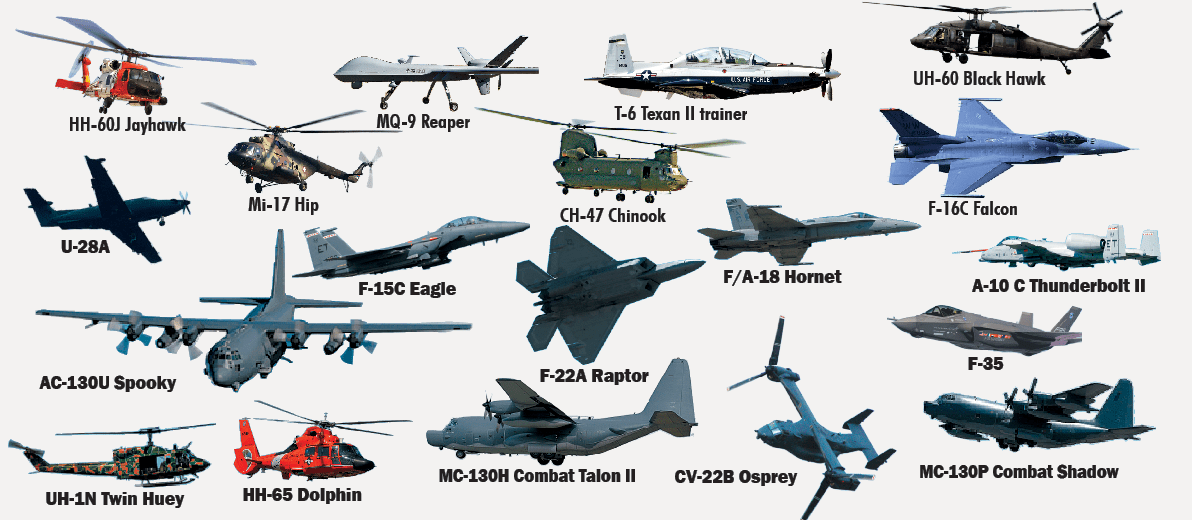Military Presence

Hurlburt Field is home to the Air Force Special Operations Command. The 1st Special Operations Wing has a long, distinctive history. Hurlburt Field was originally designated as Auxiliary Field No. 9, one of the original small pilot and gunnery training fields built on the sprawling Eglin Air Force Base complex in the 1940s. The 1st SOW was redesignated the 16th SOW on Oct. 1, 1993, by Air Force Chief of Staff Gen. Merrill A. McPeak, as part of Air Force-wide unit renumbering. The mission of the 16th SOW continued to provide a rapid reaction force for global special operations and to train aircrews to instruct and assist allied forces in all phases of special air operations.
On Nov. 16, 2006, the Air Force re-designated the 16th SOW back to the 1st SOW. Hurlburt Field is proud of its history and it stands ready to perform its unique mission “Any Time, Any Place.”
Eglin Air Force Base is located southwest of Valparaiso, Florida, and covers 463,128 acres. Eglin AFB was established in 1935 as the Valparaiso Bombing and Gunnery Base. It is named in honor of Lt. Colonel Fredrick I. Eglin (1891–1937), who was killed in a crash of his Northrop A-17 pursuit aircraft on a flight from Langley to Maxwell Field, Alabama. Eglin is the home of the Air Armament Center (AAC) and is one of three product centers in the Air Force Materiel Command (AFMC). Serving as the focal point for all Air Force armaments, the AAC is the center responsible for the development, acquisition, testing, deployment and sustainment of all air-delivered weapons.
The 33rd Fighter Wing “Nomads,” an associate unit at Eglin Air Force Base, was re-designated under Air Education and Training Command on Oct. 1, 2009. As the first of its kind in the Department of Defense, the joint wing is responsible for F-35 A/B/C (Joint Strike Fighter) pilot and maintainer training for the Marine Corps, the Navy, the Air Force and, in the future, at least eight coalition partners.
The area is also home to soldiers from the Army 7th Special Forces Group. The Air Force-owned, Army-occupied land just north of Eglin and west of Duke Field, sports 500 acres of land. The facility officially opened its gates on May 2, 2011, and is home to more than 2,200 active duty soldiers and 3,000 dependent spouses and children. The 7th SFG has nearly 500 soldiers deployed across 10 countries and in three different battle theatres.
The site now occupied by Naval Air Station Pensacola has a colorful historical background dating back to the 16th century when Spanish explorer Don Tristan de Luna founded a colony here on the bluff where Fort Barrancas is now situated. Construction began in April 1826, and the Pensacola Navy Yard became one of the best equipped in the country. Today, the Pensacola Naval Complex in Escambia and Santa Rosa counties employs more than 16,000 military and 7,400 civilian personnel. Naval Air Station Whiting Field in Milton, Fla., is the busiest Naval Air Station in the world, responsible for an estimated 46 percent of the Naval Air Training Command’s total flight time and more than 11 percent of Navy and Marine Corps total flight time. More than 1,200 personnel complete their initial flight training every year. NAS Whiting Field and Training Air Wing Five have an outstanding and unmatched safe flying record. The station has served as a naval aviation training facility since it was established as a naval air auxiliary station in July 1943. Its present mission is to train student naval aviators in the primary and intermediate phases of fixed-wing aviation, and in the advanced phases of helicopter training.